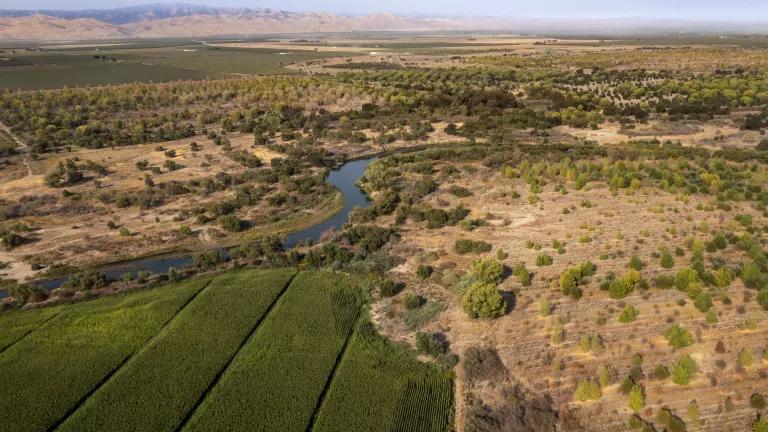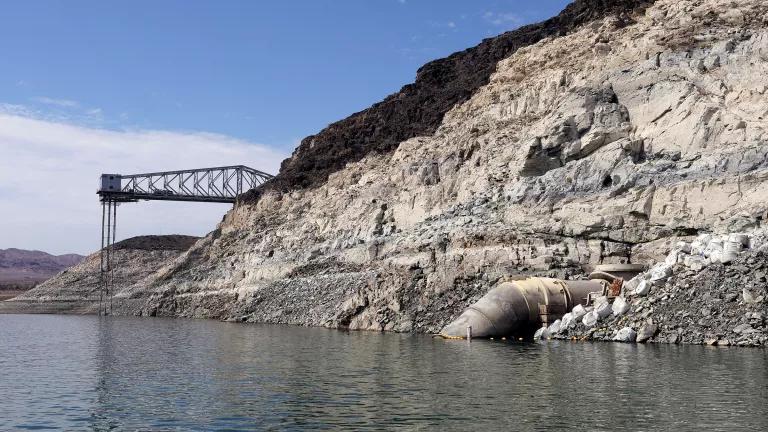Bay-Delta VA: A Sweetheart Deal to Subsidize Agribusiness
It’s not surprising, given who was in the room negotiating this backroom deal, that the VAs are a sweetheart deal that would subsidize the mitigation obligations of the state’s largest irrigation districts and industrial agribusinesses, undermining the Public Trust.

Not only does the proposed Bay-Delta voluntary agreement wholly fail to provide the water that the environment needs, but even the woefully inadequate flows and the habitat restoration proposed in the VA would largely come from other water users and taxpayers, rather than the water districts that signed the MOU. It’s not surprising, given who was in the room negotiating this backroom deal, that the VAs are a sweetheart deal that would subsidize the mitigation obligations of the state’s largest irrigation districts and industrial agribusinesses, undermining the Public Trust. If you think state and federal taxpayers should pay to subsidize Stewart Resnick’s almond and pistachio empire, the VAs are the deal for you!
I. Funding Under the Voluntary Agreement
When it comes to funding for the voluntary agreement, preliminary analysis shows that the vast majority of funding for the proposal would come from state and federal taxpayers – not the water districts that signed the MOU:
|
VA FUNDING |
||
|
|
Dollars | Percentage |
| Water Districts | $ 668 |
23% |
| Federal Taxpayers | $ 740 |
25% |
| State Taxpayers | $ 1,506 |
52% |
|
TOTAL |
$ 2,914 | |
Moreover, some of this isn’t even new money, but instead is redirecting existing funds away from ongoing obligations. For instance, part of the funding supposedly coming from water districts simply redirects existing fees they are required to pay under the 1992 Central Valley Project Improvement Act ($10M/year).
California law is clear that the State does not have to compensate water districts if they are required to reduce their water diversions in order to ensure that more of the public’s water flows through the public’s rivers to protect the Public Trust and prevent unreasonable use of water that harms salmon and the environment. However, rather than enforcing the Public Trust, the 2022 voluntary agreement requires state and federal taxpayers to purchase water to subsidize these water districts’ mitigation obligations, much of which are short term purchases that would not provide any lasting environmental protections:
|
VA FUNDING |
||
|
|
Dollars |
Percentage |
| Habitat Restoration | $ 858 |
33% |
| Science/Governance | $ 128 |
5% |
| Flow (short-term) | $ 703 |
27% |
| Flow (Permanent) | $ 900 |
35% |
|
Total |
$ 2,589 | |
Moreover, past programs in California to purchase water for the environment have failed spectacularly, and this program appears likely to repeat those mistakes. Most notably, the Environmental Water Account (EWA) in the 2000s paid nearly $200 million of taxpayer monies to water districts as part of a failed program to protect the Delta. In addition, the Bureau of Reclamation’s program to purchase Level 4 water supply for wildlife refuges has failed to meet the mandate of the Central Valley Project Improvement Act (CVPIA) to purchase and deliver full Level 4 water supply for wildlife refuges by 2002. Relatedly, Interior has violated the CVPIA’s requirement to dedicate 800,000 acre feet of environmental flows under section 3406(b)(2); Interior has failed to dedicate the full volume of required flows for the environment in 2011, 2014, 2015, 2017, and 2019, and likely 2020 and 2021, and in other years this (b)(2) water not significantly increased flows compared to regulatory requirements. The VA’s program to purchase flows for the environment – from many of the same water districts that are parties to the MOU – appears to repeat many of the flaws of these failed programs.
The VA also includes funding for habitat restoration. We support habitat restoration, including floodplain restoration, but there’s still little or no scientific evidence that habitat restoration can replace freshwater flows for many of our native fish species; as the State Water Board concluded in 2010, “flow and physical habitat interact in many ways, but they are not interchangeable.”
More importantly, since all of the habitat restoration is being funded with taxpayer dollars, this habitat restoration should occur with or without a voluntary agreement, particularly for state funding that has already been appropriated. So these habitat restoration projects also would be implemented under the Bay-Delta Plan. Or is the Newsom Administration arguing that they won’t use taxpayer funding for habitat restoration in the Bay-Delta unless it’s part of a sweetheart deal to subsidize CVP/SWP contractors and deprive the Delta of adequate environmental flows?
II. Environmental Flows Under the Voluntary Agreement
When it comes to environmental flows, the voluntary agreement likewise subsidizes the parties to the agreement; much of the water would not come from the water districts that signed the MOU, but instead from state and federal taxpayers or other water districts. For instance, in critically dry years, more than 70% of the flows would not come from these water districts, but instead would come from taxpayers or other water users. In wet years, more than 80% of the water would not come from the water districts that signed the MOU. And in other years, the VA assumes that between one quarter and one third of the flow would come from other water users or taxpayers.
The absurdity of this approach is perhaps best highlighted by the fact that the VA proposes that in critically dry years, water users on Putah Creek would provide more water for the environment (7,000 acre feet) than all of the water users on the Sacramento River (2,000 acre feet for the environment).
Even worse, the voluntary agreement proposes to weaken existing water quality objectives on the Stanislaus, Tuolumne, and Merced Rivers, providing far less flow for the environment than is currently required. The VA assumes that a significant proportion of the total volume of flow under the VA would come from these tributaries – even though none of those water districts are parties to the voluntary agreement. The 2018 amendments to the Bay-Delta Plan required 40 percent of unimpaired flow in these months, which was far less than what the California Department of Fish and Wildlife, conservation groups, and independent scientists had found was necessary to restore these rivers and achieve the State’s salmon doubling objective. Yet the VA appears to gut the existing instream flow requirements on these three rivers even further, and initial analysis shows that the VA result in significantly less than 30% of unimpaired flows in Wet, Above Normal, Below Normal and Critically Dry years, and just over 30 percent in Dry years, as the table below shows:
The State Water Board and state agencies previously rejected a proposal to require 35% of unimpaired flow, finding it was scientifically inadequate during the regulatory process of updating the Bay-Delta Plan, but the VA is based on political science rather than biological science.
And for the water districts that did sign onto the MOU (largely CVP and SWP contractors), much of the water they would provide under the VA would simply replace Delta outflows that were eliminated by the Trump BiOps (section 5.1(A): “portion of the volumes of water in Appendix 1 will be managed with a priority of providing increased flows in the months of April and May in D, BN, and AN water years to replicate average outflow resulting from the I/E ratio in the 2009 salmonid BiOp as modeled.”). What’s more, it appears that under the VA, if there is more water coming from the San Joaquin Basin than anticipated in the VA, CVP/SWP contractors may give up even less water for Delta outflow that what is shown in the VA, and simply export more water (see section 8.3 of the VA).
Taken as a whole, the proposed voluntary agreement assumes that the majority of the funding and much of the water would come from taxpayers or other water users, not the water districts that signed onto the MOU. It is a massive taxpayer subsidy for these politically powerful water districts that were in the room where it happens.
In next week’s blog, we’ll focus on how the proposed voluntary agreement wholly fails to address droughts.



